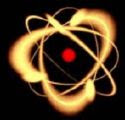
I do believe in the long-lived premise that the only thing inevitable in this world we live in is change and no less than change. We have seen the transition of education as a process, being so education experts have already said that the educational community must also adapt to the changing times such is what is happening at the moment.
Learning as given before being hierarchical and process or linearly oriented must also be reconditioned to meet the times’ needs. Learners nowadays are not as passive as they were decades ago. Now people crave to be ‘on line’- that is to be more participative in the acquisition of knowledge itself. Students now know were to get answers from queries that bother them, thus making learning as easy as a touch of a button.
The linear progression in the curriculum will stay for quite sometime, believe me. But there is always room for the improvement of such. The interconnection of the learning communities through linked digital automation technologies have far increased the drive to learn and furthermore to share what is learned.
This web would further create a strong bond that is needed by the educational community at this moment. Education would persist to be as important as before yet now more accessible and more holistically shared.
Learning as given before being hierarchical and process or linearly oriented must also be reconditioned to meet the times’ needs. Learners nowadays are not as passive as they were decades ago. Now people crave to be ‘on line’- that is to be more participative in the acquisition of knowledge itself. Students now know were to get answers from queries that bother them, thus making learning as easy as a touch of a button.
The linear progression in the curriculum will stay for quite sometime, believe me. But there is always room for the improvement of such. The interconnection of the learning communities through linked digital automation technologies have far increased the drive to learn and furthermore to share what is learned.
This web would further create a strong bond that is needed by the educational community at this moment. Education would persist to be as important as before yet now more accessible and more holistically shared.






